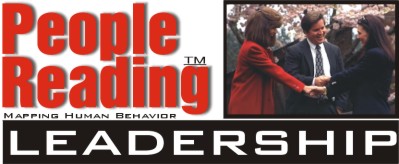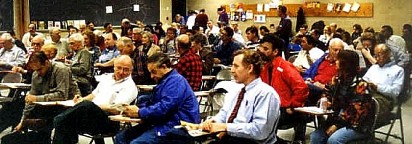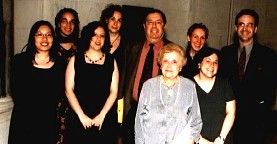 |
Five Basic Questions |
|
1 |
What
is the business for? What is its purpose? |
|
2 |
What
is the desired culture? |
|
3 |
How
do people in the organization do their work? |
|
4 |
What
kind of people do we want to work with? |
|
5 |
Where
did WE get our people skills training? |
 |
Five Essential Answers |
|
1 |
The
purpose of any business is to create and retain clients. |
|
2 |
The
desired culture should emanate from a company-wide vision. |
|
3 |
Efficiency
depends on establishing rational and accessible goals. |
|
4 |
We
want people that we can trust to do the right thing. |
|
5 |
We
don't have a process for establishing and improving our people
skills. |
 |
Recommended Action Plan |
| |
Based
on the answers, we develop a strategy to improve your people
skills and increase your efficiency. |
|
1 |
We
start with a comprehensive analysis of you! That's right. What
is your behavioral profile? How do you view the
world...your work, home, and friends? What gifts and challenges
do you have that affect your expressions, actions, feelings,
and thinking? |
|
2 |
Then,
we study how your traits influence your performance. We analyze
your work issues and explore how your traits affect your assessment
of your associates. |
|
3 |
Next,
we begin to look at people in your immediate sphere of influence
and develop sample profiles that would include a list of their
gifts and challenges. |
|
4 |
Then
we lay out an action-plan to help you, first, understand their
nature and what to do about it --- how to guide, train, influence,
and make demands |
|
5 |
Then
we begin to measure. We follow up with additional training in
areas that present continuing problems and offer strategic, individual
solutions for each issue. We meet your objective of improving
your people skills with a systematic, targeted, and productive
method of assessment. |
 |
Sample Ideas and Philosophies We Observe |
|
Tell the truth
Listen Interactively
Criticize Up, Praise Down
Don't Gossip |
Understand First
Honor the Relationship
Appreciate Differences
Respect the Individual |
| We Should Always Remember: We Get What We Give |

|
People Reading
enables a transition from management to leadership.
 |
Management
versus Leadership |
| |
Leadership deals with direction.
Management deals with speed. |
| |
Leadership deals with vision, effectiveness,
and results, focusing on people. Management deals with
establishing structures and systems, focusing on efficiency,
analyses, logistics, methods, procedures, and policies. |
| |
Leadership focuses on the top line.
Management focuses on the bottom line. |
| |
Leaders deal with values and
correct principles. Managers organize resources to serve
objectives to increase the bottom line. |
| |
A
leader needs to build a team, reduce friction, and recognize
the differences between people-their gifts and challenges. The
role of a manager is to multiply work. |
SUMMARY:
The two basic goals of leadership, then, are to build mutual
respect and a complimentary team.
A leader makes each strength an asset and each weakness irrelevant.
Using People
Reading enables every leader to understand the actions, motivations,
and performance of their associates BETTER.
|
|







